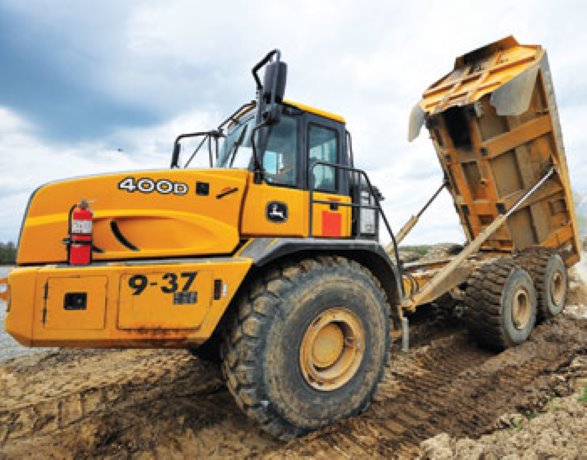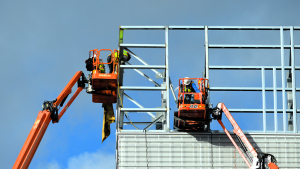Spring in southern and western Manitoba almost always brings at least some flooding.This year is no exception, as rivers swollen with water and debris have overflowed their banks in many parts of the province.
Spring in southern and western Manitoba almost always brings at least some flooding.
This year is no exception, as rivers swollen with water and debris have overflowed their banks in many parts of the province.
Although 2011 has not been as bad as the 1997 Flood of the Century, thanks in part to enhancements to the flood protection infrastructure, flood waters have threatened farmland, houses, summer cottages, roads and bridges.
As of mid-May, there were 663 municipal roads closed and 112 provincial roads that were fully or partially closed.
Fortunately, provincial and municipal governments, consulting engineers and heavy equipment operators have been working to prevent an emergency from becoming a disaster.
For example, when early forecasts predicted serious flooding, the province committed $21 million for the purchase of new and enhanced flood-fighting equipment, such as heavy equipment, specialized dikes and water barriers.
This equipment reinforced the 18 flood protection works – dikes, diversion channels and reservoirs – that were already in place from near the Saskatchewan border eastward to the Red River Valley.
Doug McMahon, executive director of water control and structures in Manitoba Infrastructure and Transportation (MIT), said his department has consulting engineers on retainer this spring, mostly for geotechnical, flood analysis, hydraulic and structural consulting.
Ron Typliski, president of the Association of Consulting Engineering Companies – Manitoba, said that as many as 200 consulting engineers have taken part in this year’s flood fight.
McMahon said the province has also retained heavy equipment operators around the province, because they have local knowledge.
“If the work is urgent, it won’t go to tender and the contractors are paid an hourly rate,” he said.
McMahon said that in most instances the province co-ordinates the activities of the engineers and equipment operators.
“However, in an emergency situation, the province relies more on contractors to… make operating decisions within a broadly defined scope of work or work area,” he said.
Chris Lorenc, president of the Manitoba Heavy Construction Association said that between 30 and 50 companies from across Manitoba have been at work since the beginning of March, building and shoring up dikes, setting up temporary concrete barriers and placing rip-rap on river banks and around bridge piers.
“It’s challenging, dangerous work that needs to be done quickly,” he said.
“There are huge volumes of debris-filled water rushing by every second that can damage equipment and take lives.”
In March, to protect against ice-induced high-water flow, contractors using 260 pieces of heavy equipment raised 80 kms of dikes between Portage La Prairie and Winnipeg by as much as three or four feet.
The work was done quickly. Workers were busy seven days a week for 14 hours a day, while the ground was still frozen.
Winnipeg-based Hugh Munro Construction Ltd. was contracted by MIT in February to supply and place 23,000 tons of rip-rap at the Baie St. Paul bridge on the Assiniboine River.
Company engineer Bill Fisher said that Hugh Munro was also contracted to shore up a dike in the same area.
The project, which required a total of 23 scrapers, dozers and excavators, lasted from March until early April.
And, working with Winnipeg-based KGS Group Consulting Engineers, Hugh Munro used backhoes, trucks and excavators to prevent a possible downstream flooding of the Assiniboine, by creating a 20-metre breach in the dike southeast of Portage La Prairie.
“All the work was very difficult,” Fisher said.
“Much of it took place in the rain and all of it in thick, heavy mud.”
Following the devastating 1997 flood, the City of Winnipeg created a body called the Geotechnical Emergency Response Team (GERT).
Comprising city officials and engineering consultants, GERT provided geotechnical design and engineering to protect the city from flood waters.
GERT was re-formed in March 2011 and is made up of seven local engineering firms.
Ken Skaftfeld, the city’s riverbank management engineer, said that the first course of action, if GERT identifies a dike problem, is to have one of the city’s rapid response teams make the necessary repairs.
“If the dike repair is more significant, the city would likely retain a private sector contractor, who would do the repair work under the direction of either Public Works or Water and Waste,” Skaftfeld said.
“GERT would provide technical assistance for the repairs and monitoring afterwards.
“In 1997, we used nearly all of the private sector contractors, but also had the military do much of the heavy lifting, which is exactly what is being done along the Assiniboine west of the city this year.
The military is providing helicopters to move sandbags and specialized tracked equipment.











Recent Comments
comments for this post are closed